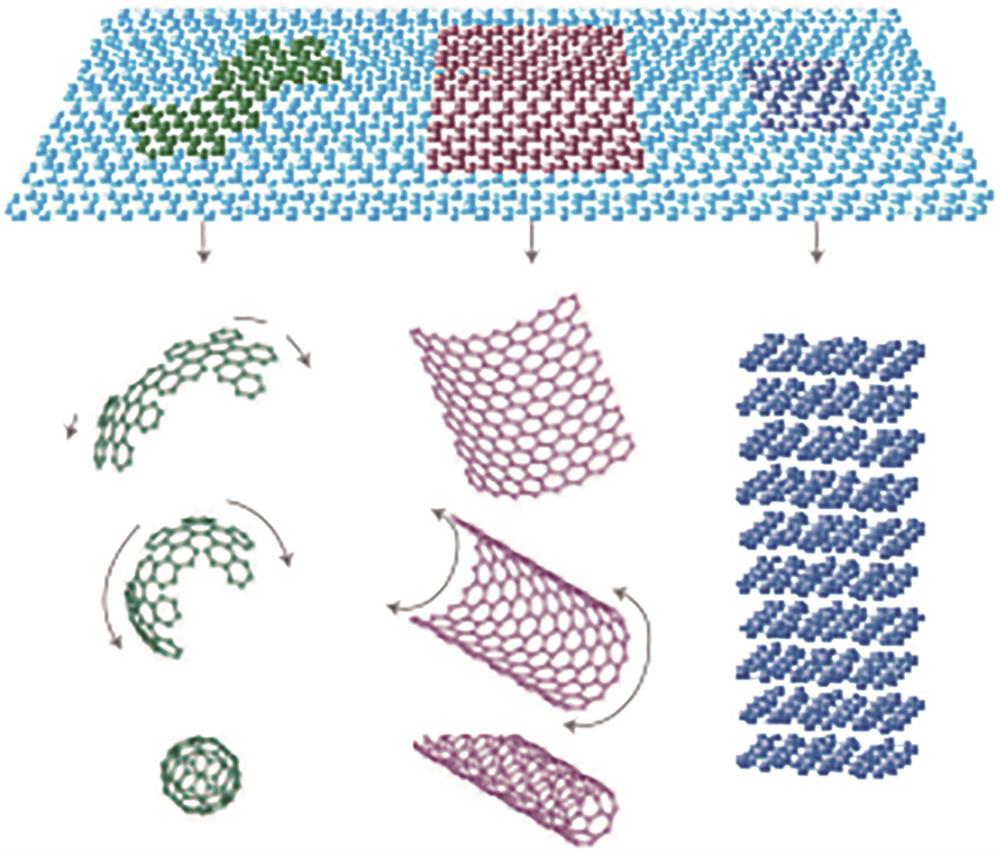Jiahui Zhang, Xiuhong Wang. Optical Biosensors Based on Graphene-Like Two-Dimensional Materials[J]. Laser & Optoelectronics Progress, 2023, 60(11): 1106016
Search by keywords or author
- Laser & Optoelectronics Progress
- Vol. 60, Issue 11, 1106016 (2023)
![Zero-dimensional fullerene, one-dimensional single-wall carbon nanotube, and three-dimensional graphite formed by graphene[7]](/richHtml/lop/2023/60/11/1106016/img_01.jpg)
Fig. 1. Zero-dimensional fullerene, one-dimensional single-wall carbon nanotube, and three-dimensional graphite formed by graphene[7]
![Atomic structure of typical two-dimensional materials[16]](/richHtml/lop/2023/60/11/1106016/img_02.jpg)
Fig. 2. Atomic structure of typical two-dimensional materials[16]
Fig. 3. Schematic diagram of the detection principle of GO-based fluorescent biosensor[46]
Fig. 4. Graphene optical sensors for cell recognition. (a) Flow-sensing system for a single-cell setup; (b) discrete time-dependent changes in voltage that correspond to mixed lymphocytes and Jurkat cells as they roll across the detection window; (c) enlarged images of voltage signal at certain positions in Fig. (b); (d) statistical plot of mixed cells of Jurkat cells and lymphocytes detected (regions R1 and R2 represent the statistical distribution of Jurkat cells and lymphocytes, respectively, inset is the histograms with the number of counts for each cell population)[52]
Fig. 5. Monitoring the response of cancer cells to drugs using graphene sensors. (a) Schematic diagram of graphene optical sensing system; (b) weak refractive index change generated by ultrasonic; (c) response time of the graphene-based optical sensor; (d) response of LoVo cell to paclitaxel[54]
Fig. 6. Schematic illustration of the graphene oxide/up conversion nanoparticle sensor detection flow[56]
Fig. 7. Schematic view of the formation of GONS@SurMB and delivery of the nanocarriers to the astrocyte cells to detect survivin mRNA[58]
Fig. 8. Detection of miRNA using antimonene SPR sensor. (a) Schematic diagram of an antimonene sensor for detecting miRNA hybridization events; (b) SPR spectra with miRNA concentrations ranging from 10-17 mol/L to 10-11 mol/L (arrow indicates the changes in SPR angle)[59]
Fig. 9. The GO-AgNPs SERS sensor detects PSA. (a) Illustration for SERS immunoassay of PSA; (b) SERS spectra; (c) linear curve for PSA detection[61]
Fig. 10. Graphene SPR sensors specifically detect proteins. (a) Principle of graphene-based fiber optic SPR biosensor and the experimental setup; (b) SPR spectra for each analyte; (c) SPR wavelengths for each analyte[63]
|
Table 1. Difference between a graphene-based electrical sensor and a graphene-based optical sensor[51]
|
Table 2. Comparison of multiple PSA detection methods

Set citation alerts for the article
Please enter your email address



